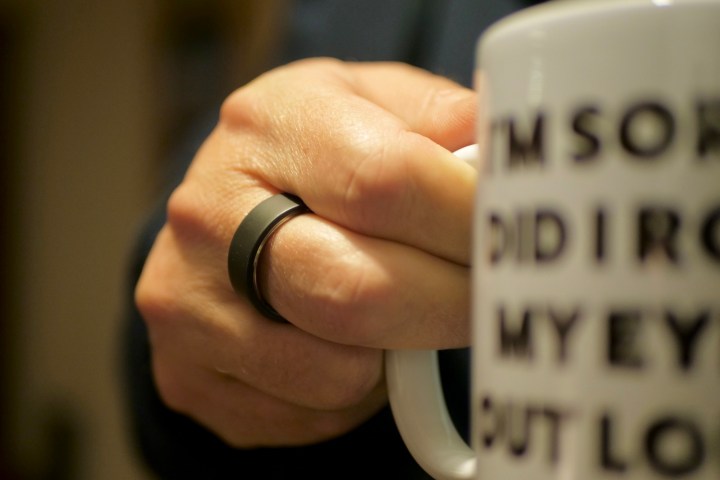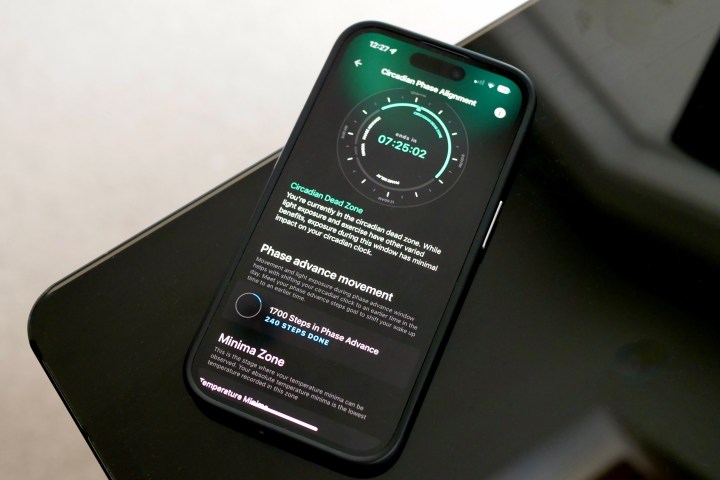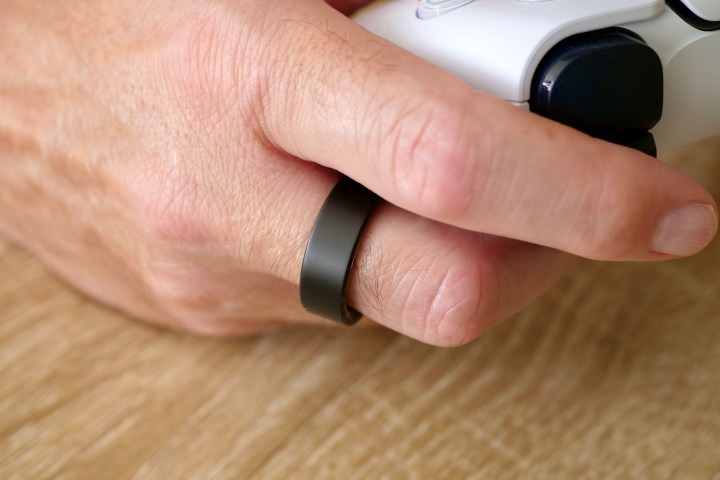
“Want to try a smart ring?” I asked my friend during one of our fairly frequent conversations about how we should be exercising more, and generally improving our health through activity.
“Sure,” he replied, his voice a mix of tones ranging from sad resignation about the current state of affairs to cautious optimism about the future.
So the next week, I handed over an Ultrahuman Ring Air. Six weeks later, I sat down to talk about his experience with it. How would a normal person find life with a smart ring, and would it help push him to do more?
What’s different about this test?

Health and fitness products are often bought by regular people who want (or know) they should be a little fitter and more active. They’re not only looking to quantify any changes they make to their lifestyle but also to hopefully gain some motivation to do it in the first place. The ideal product is some kind of wearable, whether it’s a Fitbit, a smartwatch, or a smart ring.
What’s different about a normal person wearing one and not me, a tech journalist? It’s my job to assess how well this kind of device works, and while I obviously report on whether it pushes me and provides actionable, helpful data, I’m aware it’s also something that I have to do. My motivations are a little different. Even if I can’t really be bothered to go for a walk or workout, I do it because I’m testing the product, not just because I’m specifically trying to get fitter.
What happened during our conversation after those six weeks wearing the Ultrahuman Ring Air was fascinating, as it gave a very real insight into how life is with a fitness wearable from the perspective of someone whose only motivation was to improve and learn more about their body.
Let me introduce you to Normal Matt, who doesn’t cycle 50 miles a week and has never entered a tough mudder event; he is a moderately active person who wants to be healthier. Let’s see whether wearing a smart ring has put him firmly on the road to greater fitness.
Too much information

“I was interested to learn about my movement and see where I could improve,” Matt told me. He described himself as “stubbornly lazy” when it came to going beyond basic exercise, so the Ultrahuman Ring Air had its work cut out from the start, but he said he was keen to understand where he could change — and how much of an impact it would make when he did. It was clear the motivational tools and clarity of data were going to be most important to him.
The Ultrahuman Ring Air sent him notifications when he was close to his daily goal, and he often found them motivational enough to do something extra. These came through at the end of the day, after work, but the movement alerts during the day were nothing but an annoyance. When he knew he was going to be active, he was always keen to see the data in the app afterward, showing the ring’s ability to motivate came mostly through data and well-timed notifications rather than regular interruptions.
However, the Ultrahuman Ring Air’s app didn’t always present the data well. “I’m not sure I understand much,” Matt said, commenting on the wide range of numbers and data points presented in the app. While he understood the numbers, obviously, it was the explanations of why he should care, what he could do to change them, and why he should bother that was the problem.
I lost interest quickly because the data wasn’t clear, and the advice was too obvious.
“It gets bogged down with too much information, which isn’t clearly explained,” he said. “It needs refining because it doesn’t clearly tell me why I should care about all the data.” This problem also affected sleep tracking. “I lost interest quickly because the data wasn’t clear, and the advice was too obvious, such as ‘turn the lights off,’ ‘be in a cool room,’ ‘don’t drink coffee too late,’ and ‘have a comfortable mattress.’ It is not that helpful.”
Depth and understanding of the data

The more we talked, the clearer it became that the Ultrahuman Ring Air’s app wasn’t very good at telling Matt what he wanted to know in a language and format he could understand. This mirrored my own experience with the smart ring, so it didn’t come as a shock. Matt also wanted to see a simple page with an overview of his performance and then dig deeper if he wanted. For example, he would have found information about the importance of raising his heart rate during a workout useful, along with an immediately obvious step count or daily goal target on an at-a-glance page. He had the idea this data was in the app somewhere but didn’t want to go on an expedition to find it.
Having to make an effort to find data that was helpful to him without questioning what it meant — heart rate variability (HRV) is a great example, as he needed to look elsewhere for guidance on whether it was important or not — is not motivational at all. Instead, it’s frustrating, and this is when fitness wearables are in danger of being abandoned. He also found the complexity of language used a barrier to being motivated by the Ring Air, and mentioned it did take quite a time to learn the app’s layout and functionality too.
It’s not a good position to be in. Granted, Matt would have done his own research prior to any purchase to make sure a device was suitable for his needs, but what he wants is pretty basic. He’s not crying out for more; he’s actually asking for less, which indicates the Ultrahuman Ring Air is too technically complex and has lost sight of providing simple, actionable information everyone needs and understands.
What about the ring itself?

While the Ultrahuman Ring Air isn’t fully providing the motivation and data Matt may have wanted, he did tell me he’d miss wearing it mostly for those times when he is close to reaching his goal and needs a short burst of activity to make it. It’s impossible to know this without some form of tracker. But there’s one thing stopping him from fully committing to it long-term: comfort.
“I swap it around different fingers because it’s sharp,” he told me. Again, this is something I found when wearing the Ultrahuman Ring Air. He liked the color, though, and commented a lot of people had noticed the ring and reacted positively. He also liked the relative exclusivity of wearing a smart ring. He never found battery life to be an issue and simply put in the charger when he was in the shower. But the overall comfort level kept coming up as an issue.
I asked if he would have been pleased with the Ring Air if he had paid the $350 asking price. He said no and cited the poor comfort, complexity of the app, and lack of easily interpreted, quickly accessed basic data as reasons. I am pretty sure the Oura Ring would be a better choice for him, as it’s more comfortable, data is more accessible and better presented in the app, and it’s nowhere near as complicated as the Ultrahuman Ring Air tries to be. When I explained more, though, he was immediately put off by the Oura Ring’s monthly subscription fee.
The potential to change lives

We are probably all guilty of buying something fitness-related in the hopes of it changing our lives and then finding it doesn’t. Whether it’s an exercise bike that’s now a clothes horse, a set of dumbbells hidden at the back of a cupboard, or a wearable fitness device, we learn the hard way our own motivation is equally as important if they’re going to work.
But Matt’s experience with the Ultrahuman Ring Air also shows that wearable device makers need to put more effort into tailoring the app experience to more people, making the data truly accessible and understandable, and providing simple customizations to help people get the most from it. There’s no reason he should have found the app so unfathomable when his requirements are so simple, and all the sensors are grabbing the data he wants to see anyway. It’s not like I gave him a highly focused device like the Garmin Epix Pro (Gen 2) and told him to train for a marathon.
There’s so much choice in the world of health and fitness wearables, and even though they all use similar sensors to collect essentially the same data, the presentation of it, the way it’s used, and the app you see every day is perhaps more important than the hardware if you’re hoping it’ll give you some personal motivation to get healthier.
What about the future for Normal Matt and the Ultrahuman Ring Air? I’ve not said anything about continuing to wear it for further research (he was aware I was going to write this story when we started out), so I have no idea if he’ll continue to wear it on his own or if it’ll get stuffed in a drawer and forgotten about. If it does, it won’t be the first time a health and fitness wearable has suffered this fate, and after chatting to him about it, it won’t be a surprise.



